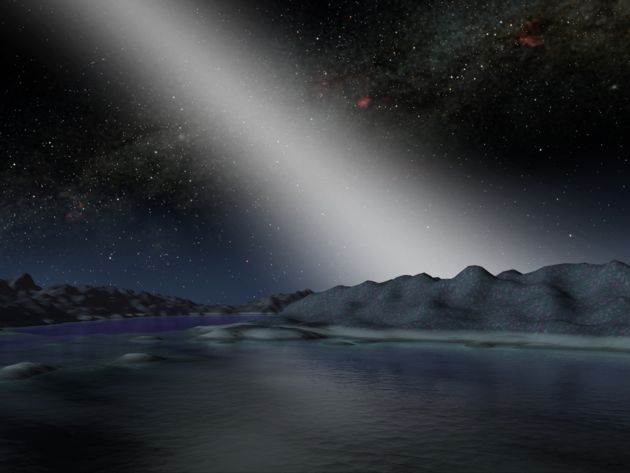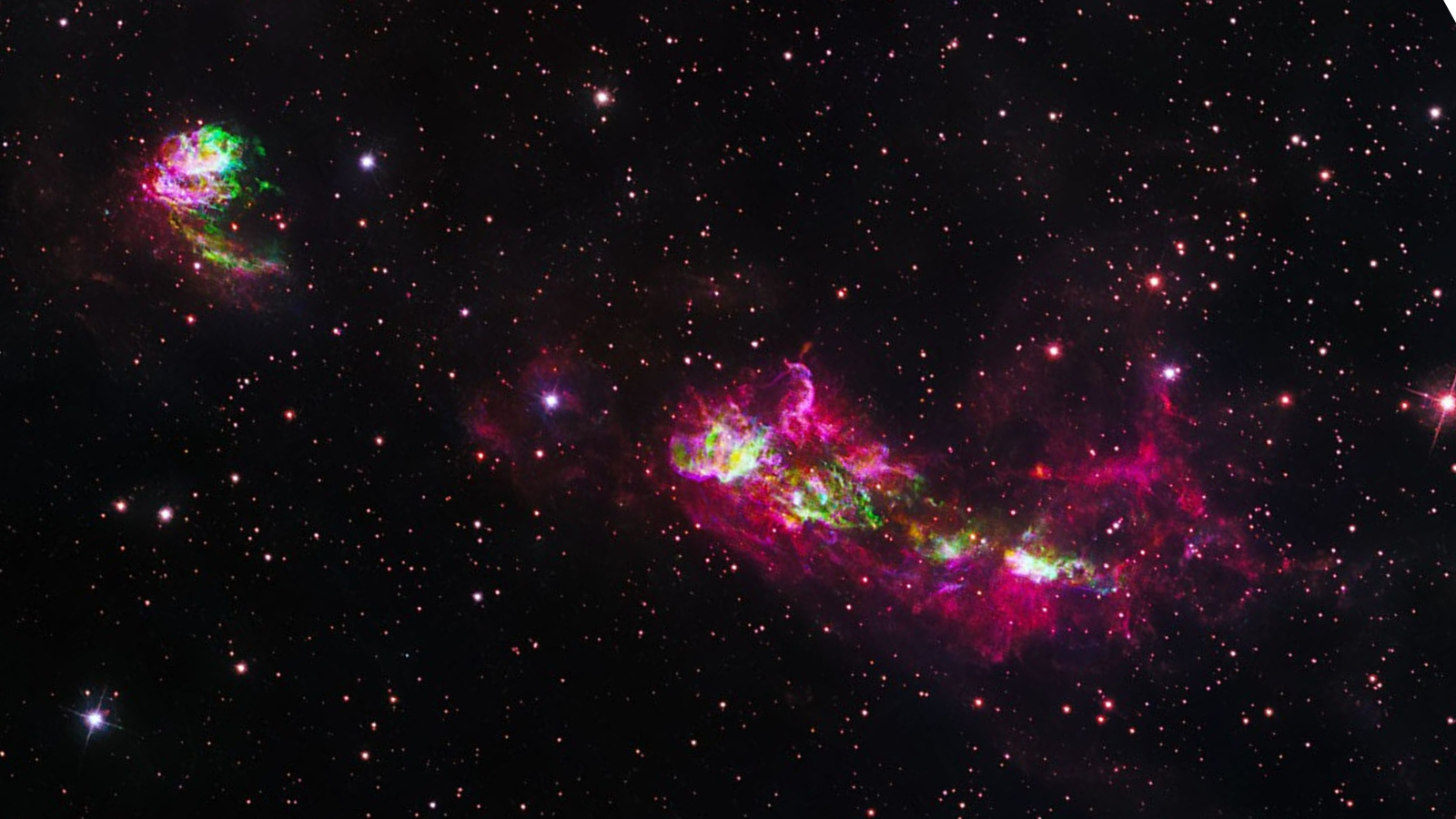Asteroids Likely Found around Sun-like Star

Wherever there might be Earth-like planets, there are likely to be asteroids, too. And now astronomers have found evidence for an asteroid belt around another star similar to our Sun.
Previous studies detected asteroid belts around other stars. But the newfound collection of space rocks -- if that's what it is -- is in a setup that might resemble our solar system, scientists announced Wednesday.
Asteroids in our solar system are said to be the detritus of planet formation. They are the objects that either did not grow large enough to achieve planet status, or they were broken apart by collisions back when the solar system was more chaotic.
Those smash-ups, in fact, are the theoretical key to the new discovery.
Asteroid collisions create lots of dust. NASA's Spitzer Space Telescope was used to spot a thick swarm of dust around a star called HD 69830, 41 light-years away. The scientists believe the dust represents a belt of asteroids in which major collisions occur every 1,000 years or so.
"Because this belt has more asteroids than ours, collisions are larger and more frequent, which is why Spitzer could detect the belt," said George Rieke of the University of Arizona. "Our present-day solar system is a quieter place, with impacts of the scale that killed the dinosaurs occurring only every 100 million years or so."
The results will be detailed in the Astrophysical Journal.
Breaking space news, the latest updates on rocket launches, skywatching events and more!
HD 69830 is not exactly a twin to our solar system.
The local asteroid belt sits between Mars and Jupiter. The HD 69830 belt is inside a region equivalent to the orbit of Earth, or perhaps half the diameter of Earth's orbit -- its exact extent is not clear. HD 69830's belt contains about 25 times more material. If there's a planet around the star, its night sky would be graced by a band of light, similar to but 1,000 times brighter than the Zodiacal Light seen from Earth.
"The night sky would be quite spectacular," said lead researcher Charles Beichman of the California Institute of Technology.
There are similarities, too. Here, Jupiter's immense gravity shepherds the outer edge of the asteroid belt. An unseen planet perhaps the size of Saturn or even smaller might play that role around HD 69830, the researchers say.
Present technology is incapable of detecting Earth-sized planets around Sun-like stars, which make this new study compelling to planet hunters.
"Asteroids are the leftover building blocks of rocky planets like Earth," Beichman said. "We can't directly see other terrestrial planets, but now we can study their dusty fossils."
Observations do not reveal whether there are any planets around HD 69830. In a NASA-run teleconference with reporters, researchers said a rocky planet cold be possible. Because the star is only about half as powerful as the Sun, however, its "habitable zone" would be confined to a region closer to the star than Earth is to the Sun.
If the asteroid belt around HD 69830 extends to the equivalent of Earth's orbital diameter, then there would be no room left for a habitable planet, said Jonathan Lunine, a planetary scientist at the University of Arizona. If the asteroid belt is confined to half an Earth-orbit diameter, then a rocky planet could have formed and might be close enough to the star to harbor liquid water, said Lunine, who was not involved in the study.
There is an outside chance the presumed asteroid belt is instead dust boiling off a comet the size of Pluto.
"The 'supercomet' theory is a more of a long shot," Beichman said. More observations by Spitzer and ground-based telescopes are planned. "We'll know soon enough."
- Comets, Asteroids and Planets around a Nearby Star
- Strange Miniature 'Solar Systems' Revealed
- Signs of Comets Spotted around Another Star
- Asteroid Belt Like Ours Spotted around Another Star

Rob has been producing internet content since the mid-1990s. He was a writer, editor and Director of Site Operations at Space.com starting in 1999. He served as Managing Editor of LiveScience since its launch in 2004. He then oversaw news operations for the Space.com's then-parent company TechMediaNetwork's growing suite of technology, science and business news sites. Prior to joining the company, Rob was an editor at The Star-Ledger in New Jersey. He has a journalism degree from Humboldt State University in California, is an author and also writes for Medium.
